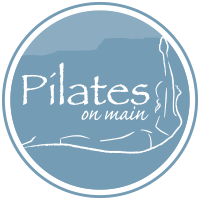Good Posture and Bad Posture
Bad Posture Symptoms
The natural shape of the spine is a long S type curve that best absorbs shock from everyday living. The neck (cervical spine) has a slight forward curve; the upper spine (thoracic) has a long moderate backward curve; and the lower spine (lumbar) has a slight forward curve to it. What happens is that these curves become excessive or minimal through poor postural habits and movement patterns in life. For most people the S curve deviates in a number of common ways: the spine becomes a rounded C curve (rounded back, rounded shoulders), an exaggerated S curve (Sway back, the upper spine has an excessive back curve, and the lower spine has an excessive forward curve),
Two pervasive symptoms of bad posture are rounded shoulders and a rounded lower back.
What causes this is the sedentary nature of our lives: two main culprits are staring at a computer screen and driving your car. Sit up straight people! Whether sitting or standing feel neutral posture.
Good Posture is quite simple to achieve for anyone:
Great posture starts with the pelvis and spine being in optimum, “neutral” alignment, with the head perched perfectly on top of the spine, not forward or back. Your ears are aligned over your shoulders, and your shoulders are over your hips. When standing (which hopefully you are doing a lot of the time), this correlation can be extended to include the hips, knees and ankles: feel that your hips are directly in line with your knees, and the knees in line with your ankles. Essentially you are creating a strong vertical axis whereby the spine is long, the pelvis is neutral, and your weight feels centered over your feet.
This alignment allows the body to most easily absorb shock through the day, and produces the least amount of wear and tear in the joints.
Why many of us suffer from poor posture is that over time we simply forget to practice our posture, and therefore ideal posture increasingly becomes more difficult to attain. The problem lies in poor movement patterns developing as well as having poor sustained postures that progressively skew the body away from neutral posture. Small, local stabilizing muscles in the spine and pelvis-the ones responsible for good posture-are not as “alert” as they should be. Think of these muscles as a light switch that needs to be turned on! By exercising your spine, and consciously thinking about your core muscles through the day, your body will naturally start to “remember” to be in ideal posture.

